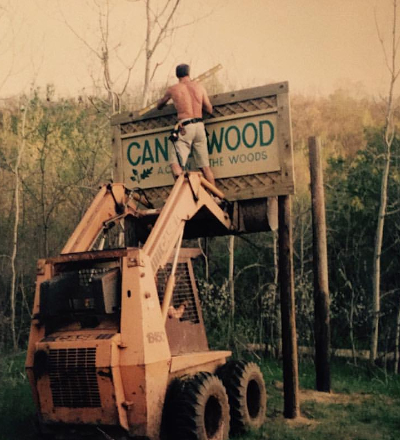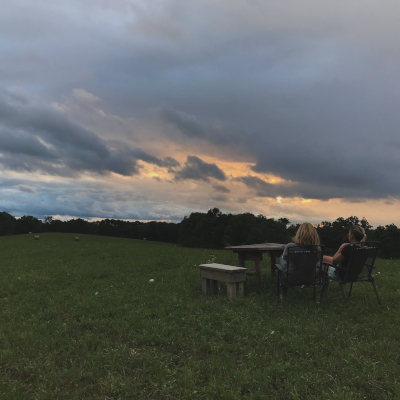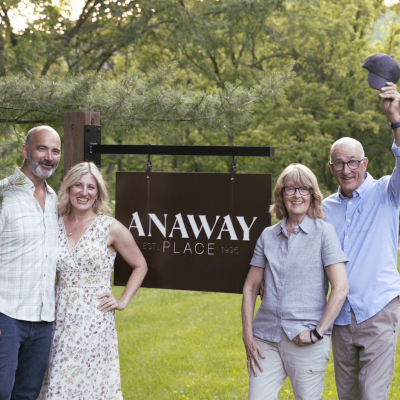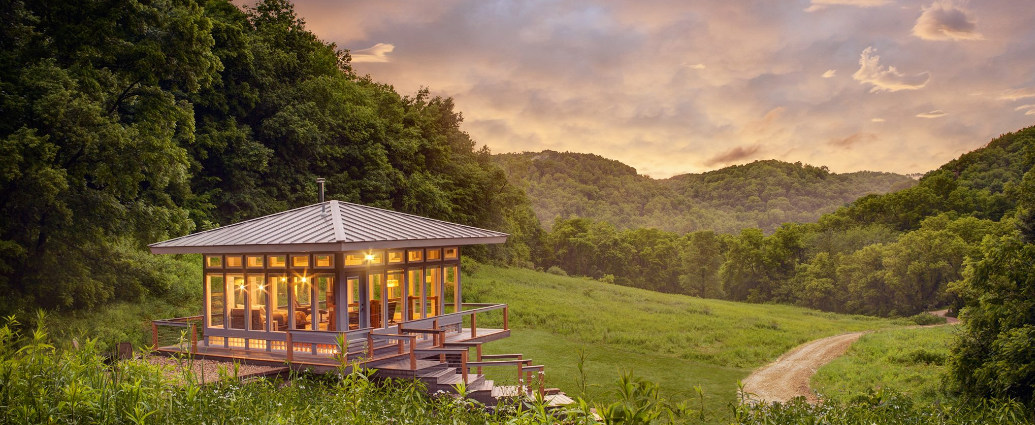 Tucked deep within the rolling ridges and valleys of Wisconsin’s Driftless Area lies Anaway Place—a sanctuary of stillness, natural beauty, and architectural curiosity. But the story of this treasured retreat begins long before its current name and vision took shape. It begins, in fact, with a love story forged in the shadow of war.
Tucked deep within the rolling ridges and valleys of Wisconsin’s Driftless Area lies Anaway Place—a sanctuary of stillness, natural beauty, and architectural curiosity. But the story of this treasured retreat begins long before its current name and vision took shape. It begins, in fact, with a love story forged in the shadow of war.
Shortly after World War II, Richard Calnin met Mechtild in Europe. They fell in love, married, and moved to Wisconsin, where both became educators—Richard at St. Norbert College in the Fox Valley, and later at UW–Richland. Mechtild pursued her passion for art and painting. In the early 1980s, the Calnins bought land in Richland County, unknowingly planting the seeds of what would become a beloved destination for thousands seeking respite in the Driftless wilds.
In 1981, their son Norbert and his wife Susan, who met while studying music and theater at St. Norbert’s, returned to Wisconsin from Florida. They joined Norbert’s parents and brother in Richland County, where they built a life filled with creativity, family, and a deepening connection to the land. Candlewood Cabins, as it was first known, wouldn’t open its doors for many more years—but the roots were growing.
A Cabin in the Hills
The first cabin, now known as The Hillside Cabin, wasn’t built to launch a business. It was meant for guests—family and friends visiting from afar. But as inquiries came in and the cabin stayed full, the Calnins recognized the quiet demand. They learned the ropes through Bed & Breakfast associations, although they were never truly a B&B. What they were becoming, unknowingly at first, were innkeepers—intentional hosts offering not just beds, but a sense of place.
As their three children grew, Susan managed the home and assisted both her and Norbert’s parents. Norbert, who ran a construction company before becoming the Foundation Director at Richland Hospital, began using his building expertise for something new: designing cabins that didn’t just sit in the landscape but spoke to it.
 From Glass to Meadow, Silo to Barn
From Glass to Meadow, Silo to Barn
What followed was a slow, deliberate expansion. Each new cabin—The Log Cabin, The Glass House, The Meadow House, The Woodland House, The Little House Next Door, and most recently The Barn—was designed with story, purpose, and environment in mind. The Glass House, inspired by leftover construction panels, became an overnight sensation. The Meadow House brought a panoramic vision of hills and valleys. The Woodland House famously grew from a breakfast-table sketch involving a saucer and a cup—its silo staircase a surprise feature that captured imaginations.
The Barn—once the home and studio of Richard and Mechtild—is now the largest of the seven, accommodating up to twelve guests and honoring the creative spirit of its former inhabitants. It even includes an elevator, making it one of the most accessible retreats in the region.
A Philosophy of Place
From the beginning, the Calnins’ mission was quietly revolutionary. Their cabins were intentionally tech-light, with minimal screens, limited cell reception, and a focus on helping guests unplug. Hiking trails crisscross the 110-acre property. Meadows serve as sunset stages. The Calnins made it their practice to share not just directions, but stories—about the land, the architecture, and the Driftless Area’s abundant offerings.
“We’re not just giving guests a key,” they said. “We’re telling them how we got here. And people are interested in that. We’ve become a destination.”
Indeed, some guests became lifelong visitors. Others, like Chris and Lyndsay, came once—and never wanted to leave.
 A New Chapter: Hearth & Green
A New Chapter: Hearth & Green
In 2021, Chris and Lyndsay stayed in The Meadow House. It wasn’t just the view that captivated them. It was the feeling—of slowing down, of reconnecting, of being somewhere that asked nothing more of them than presence.
By June 2024, that feeling had grown into something larger. Alongside their friend Lisa, they formed Hearth & Green, a collective devoted to sustainable hospitality, and became the new stewards of Candlewood Cabins—renaming it Anaway Place.
“Unplugging used to be the default,” they note. “Now it’s something people have to choose. But when they do, the benefits are powerful.”
At Anaway Place, the mission is the same, even as the vision gently evolves. To offer shelter and stillness. To invite guests to pause. To nurture the connections that matter most—with self, with loved ones, with the land.
Whether you’re watching fireflies from a screened porch, climbing a spiral staircase into a silo, or simply staring up at trees you forgot you needed—Anaway Place is a retreat not just from noise, but toward something quieter, deeper, and more enduring.


